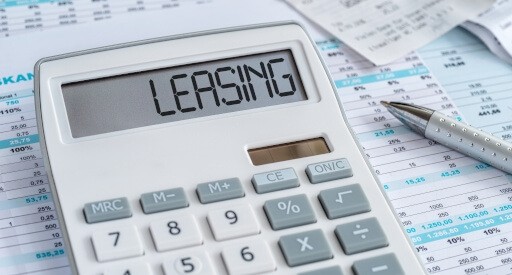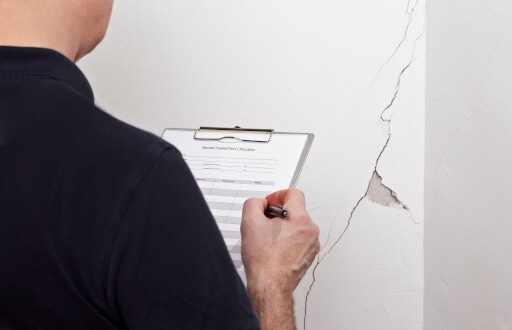Congrats! You’ve finally found a tenant for your rental property and it’s time to sign the lease. However, signing a lease isn’t as simple as inscribing your signature on the dotted line, so it’s important to know how to properly sign a lease. In some states, even an unsigned lease can still be enforceable. Legally, both landlords and renters should sign the lease and keep a printed or digital copy. However, who signs first and why is it important?
Tenants Should Sign the Lease First
When a landlord gives a potential tenant a lease, it’s an indication that the tenant has passed the screening process and the unit is available. In order to secure the unit, the tenant should sign the lease and return it to the landlord. Then the landlord should sign the lease and give a copy to the tenant, which legally binds the contract for both parties.
The tenant should sign first to avoid any confusion or complications. For example, if a landlord signs a lease first and the tenant doesn’t sign, it would be risky to remove the unit from the market while waiting for their signature. If the landlord were to wait, they lose time that could have been used to find another tenant. They would also lose money since they aren’t collecting rent. The situation could also become more complicated if the landlord sends a lease to another interested tenant, resulting in two signed leases. Avoid the risk and save money by practicing the industry standard of having tenants sign first.
The landlord’s signature finalizes the lease, so rental units are typically seen as available until the landlord has signed the document. Until a tenant signed the lease and returns it, the landlord can send a lease to other interested tenants and rent to the person who sends back the lease first. When the landlord has accepted a signed lease, they should communicate to the other interested parties that the unit is no longer available for rent. It’s also common for landlords to charge move-in fees such as first month’s rent or a security deposit when it’s time to finally sign a lease. If a tenant signs, but doesn’t pay the required fees, the landlord can void the lease.
Who Should Sign a Lease?
Anyone over the age of 18 living in the rental property should sign the lease. This ensures the terms of the lease can apply to everyone. A few examples of tenants who would need to sign the lease include:
- Cosigners (if the live-in tenant doesn’t pay rent, the landlord can reach out to the cosigner)
- All roommates and any replacement roommates/subletters
- Adult children, whether they live long term in the unit or stay occasionally
- Couples (this includes married and unmarried couples)
Different Ways to Sign a Lease
It’s common for landlords and tenants to sign leases the traditional way: both parties meet in person and sign a physical printed copy. However, meeting in person isn’t always convenient, which is why email and digital signing services like DocuSign are very popular. When signing a lease via email, the landlord will send the lease to the tenant. The tenant will then print, sign, scan, and email the lease back to the landlord. The landlord will do the same and email the finalized copy to the tenant for their records.
There’s an easier way to create lease agreements. Just use Apartments.com! With our Rental Tools platform, you can easily create a lease that fits your property and your standards. Our fully customizable lease agreements are state-specific and legally binding, meaning you can create a lease no matter where your property is located, and it will adhere to all state laws and local ordinances. Once your lease is created, your tenants can quickly sign online. No more hand-delivering paper leases and then trying to find a place to store them! Apartments.com keeps all your leases neatly organized and accessible so you can reference them whenever you like.
Regardless of the method you use, always make sure to double-check everything on the lease once the tenant sends back the document. Double-check the lease terms, the names, and the signatures on the document. Although it’s unlikely a tenant could change the lease terms, if you sign it, they could claim you were aware of the changes. The names and the signatures should match as well. You don’t want to accidentally sign the lease to the wrong person.
When Should You Negotiate Lease Terms?
It’s common for tenants to negotiate before signing. Rent amount, lease length, painting, and pet policy are examples of negotiation topics. The landlord can accept or deny the proposals. If the landlord accepts the proposed term, they would draft a new lease with the changed term(s) and send it back to the tenant for their signature. If a landlord wants to renovate while tenanted and decides to provide rent concessions, it’s common for a tenant to negotiate and the landlord will draft an updated lease detailing the terms for the rent concession.
To put it simply, the tenant should always sign the lease first and the landlord’s signature legalizes the contract. Always review the lease after a tenant returns the document and update the lease for rent concessions, if necessary. Both parties should always keep a copy of the lease, whether the lease is signed in person or digitally. Now that you know when to properly use your John Hancock, you’ll be able to avoid any confusing situations. Good luck!











